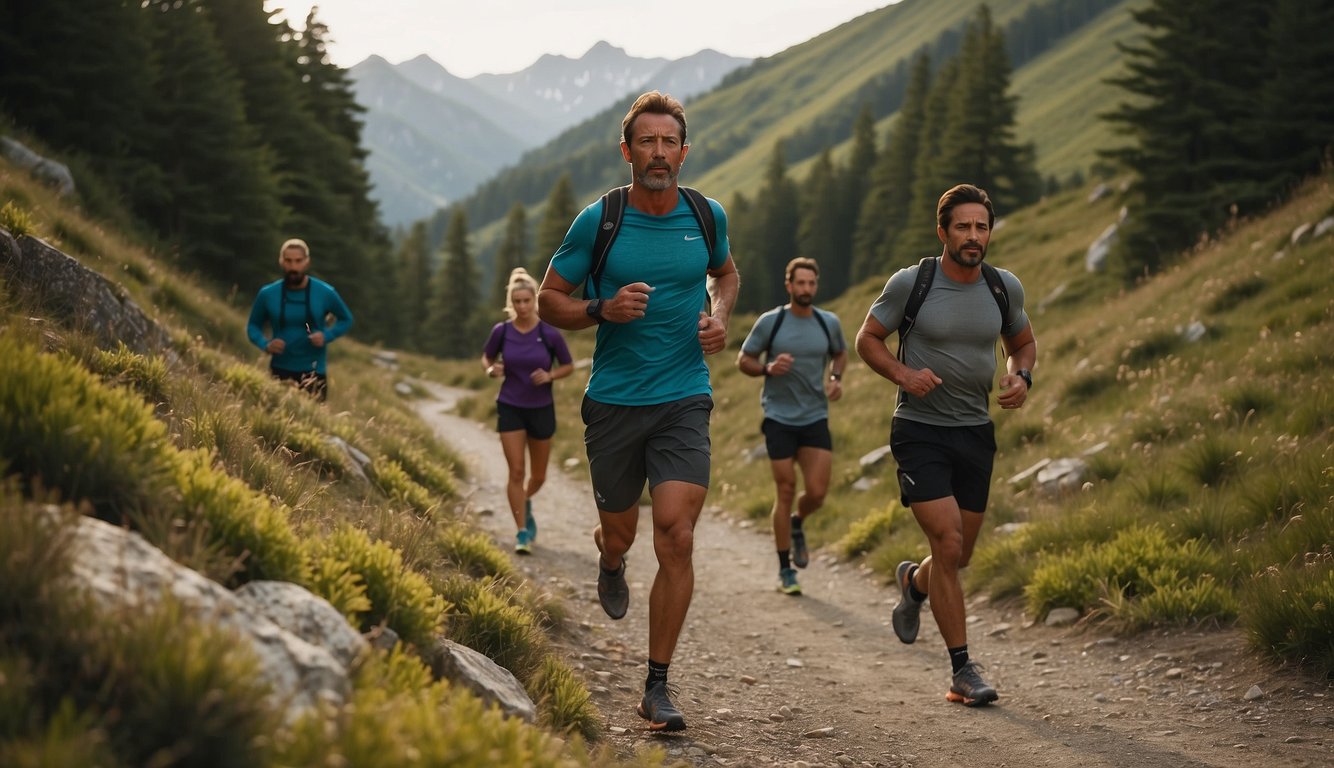As a trail runner, I’ve come to appreciate the importance of walking during my runs. It may seem counterintuitive to slow down and walk when the goal is to run, but incorporating walking into your trail running routine can actually improve your overall performance.

One reason why trail runners choose to walk is for efficiency. Running uphill can be challenging and tiring, and sometimes it’s more efficient to power hike or walk up the incline. In fact, research has shown that walking is more efficient than running at slopes greater than about 15 degrees. By incorporating walking breaks into your uphill runs, you can conserve energy and maintain a steady pace.
Another reason why trail runners choose to walk is for injury prevention. Trail running can be tough on the body, and incorporating walking breaks can help reduce the risk of injury. Walking can give your muscles a break and allow them to recover, which can ultimately improve your overall performance. Plus, it’s a great way to take in the beautiful scenery and appreciate the natural surroundings of the trail.
The Physiology of Trail Running
Trail running is a physically demanding sport that requires a lot of energy and efficiency. In this section, I will discuss some of the physiological factors that determine how trail runners adapt their gait and cadence to different terrains.
Energy and Efficiency
When running uphill, energy consumption increases due to the increased gravitational force. This makes it more difficult to maintain a steady pace and can lead to muscle fatigue. To mitigate this, trail runners may choose to walk uphill to conserve energy and maintain efficiency. Walking uphill can be more energy-efficient than running, especially on steep hills.
Muscle Fatigue and Terrain
Muscle fatigue is a common problem for trail runners, especially when running on steep inclines. Local muscle fatigue, such as in the quadriceps, can cause runners to slow down or even stop. To avoid this, runners may choose to walk uphill to give their leg muscles a break and conserve energy.
Terrain also plays a significant role in muscle fatigue. Running on uneven terrain requires more energy and can cause more muscle fatigue than running on flat terrain. Trail runners may choose to walk on difficult terrain to reduce the risk of injury and conserve energy.
Adapting Gait and Cadence
Trail runners must adapt their gait and cadence to different terrains to maintain efficiency and reduce the risk of injury. When running uphill, runners may shorten their stride length, increase their cadence, and lean forward to maintain momentum. When walking uphill, runners may take shorter steps and lean forward to maintain balance and conserve energy.
In conclusion, trail runners may choose to walk uphill to conserve energy and maintain efficiency. Muscle fatigue and terrain also play a significant role in determining when runners choose to walk. Adapting gait and cadence to different terrains is essential for maintaining efficiency and reducing the risk of injury.
Strategies and Benefits of Walking
As a trail runner, I have come to appreciate the benefits of walking during my runs. Walking is not only a great way to catch my breath and recover, but it can also help me conserve energy for the tougher parts of the trail. Here are some strategies and benefits of walking that I have found useful:
Uphill Techniques and Poles
When faced with a steep uphill climb, walking can be a much more efficient option than running. Elite trail runners, such as Kilian Jornet, often incorporate walking into their races to conserve energy and maintain a steady pace. Using poles can also be helpful when walking uphill, as they can provide extra support and stability.
Managing Speed and Heart Rate
Walking can help me manage my speed and heart rate values during a race. By incorporating walking breaks into my run, I can keep my heart rate in check and avoid burning out too quickly. This can be especially useful during longer races, such as the World Mountain Running Championships.
Mental and Visual Rewards
Walking can also provide mental and visual rewards during a trail run. Taking a break from running and slowing down to walk can allow me to take in the beautiful views and nature around me. It can also provide a sense of calm and adventure, as I am able to explore the trail at a more leisurely pace.
Overall, incorporating walking into my trail runs has been a game-changer for me. It has allowed me to challenge myself in new ways and appreciate the beauty of the trail. Whether I am facing the steepest treadmill or just looking to conserve energy, walking has become an essential part of my trail running strategy.

